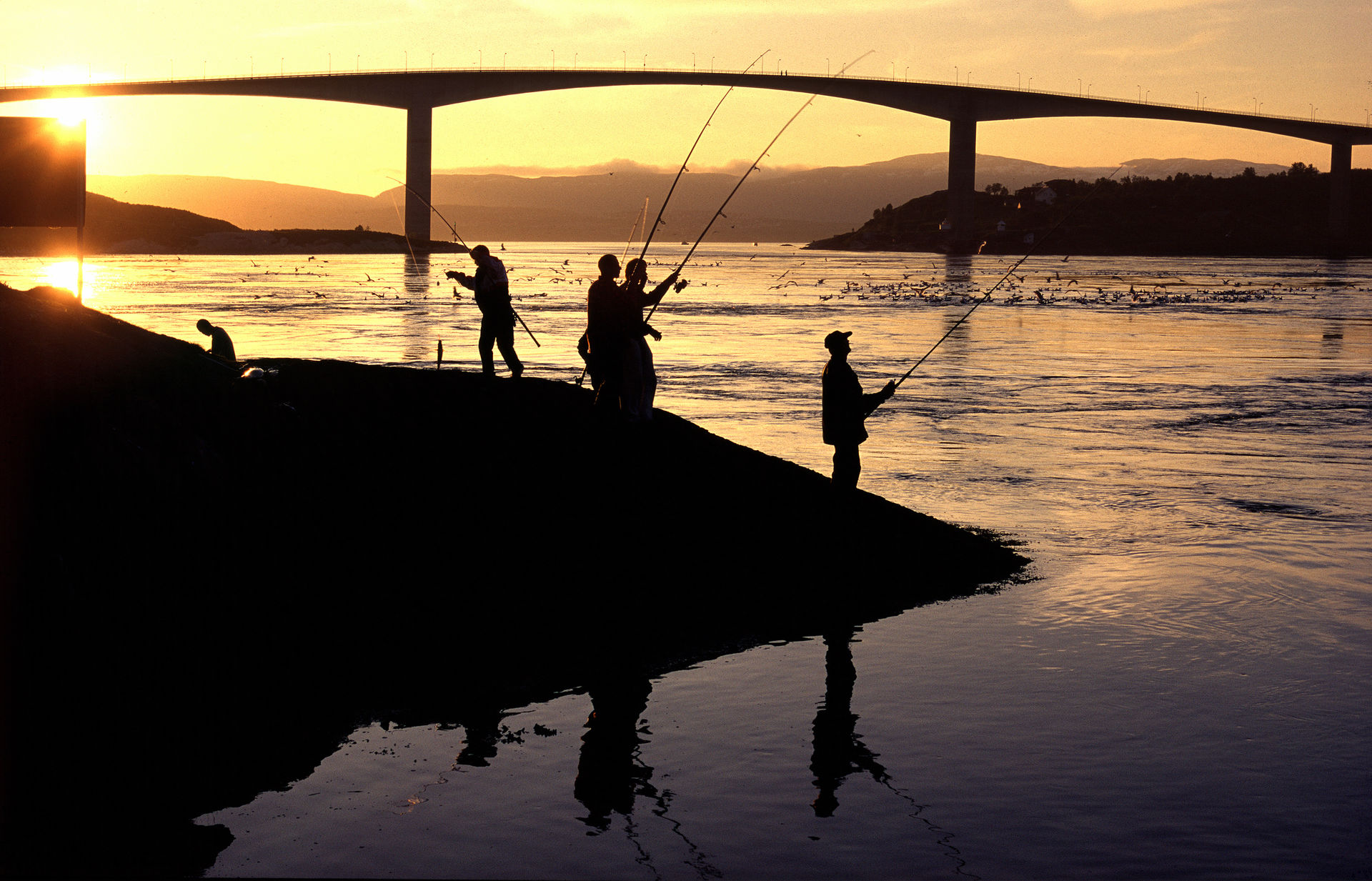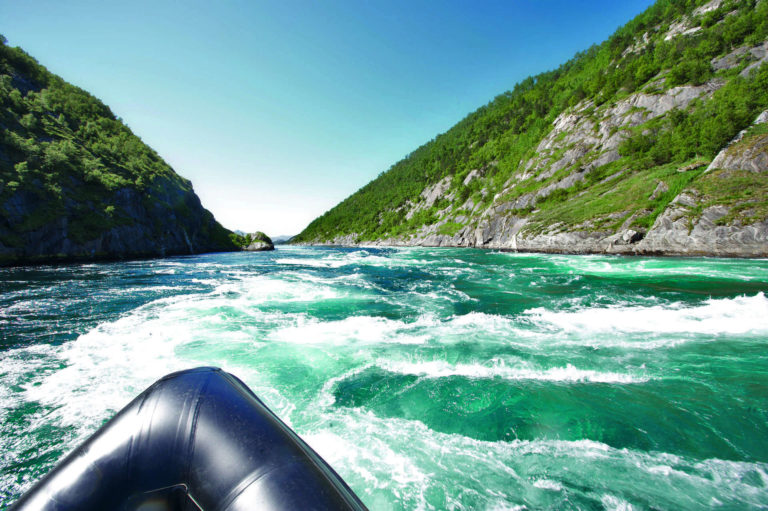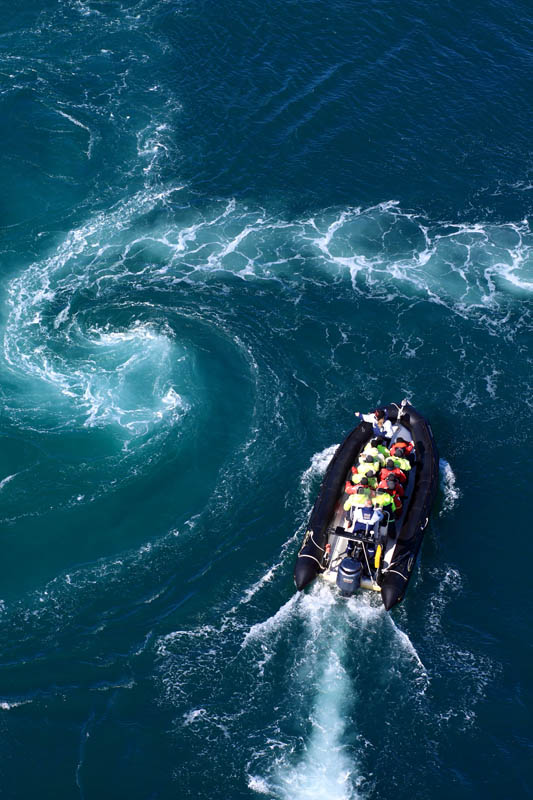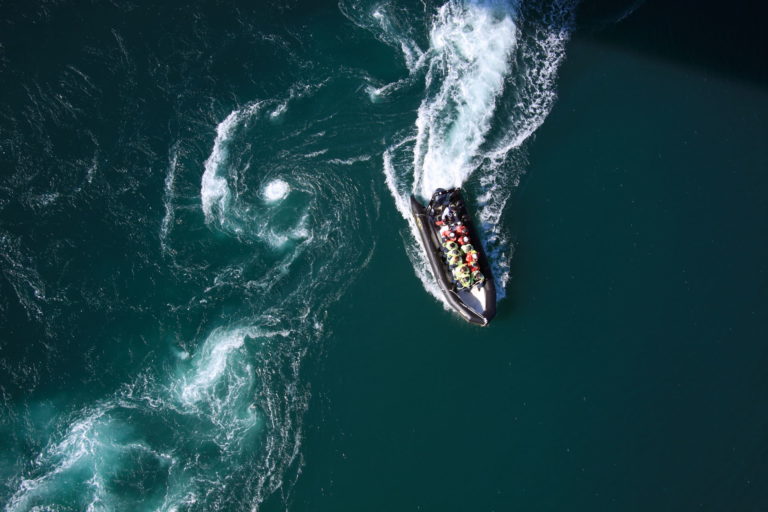Sea fishing, white-tailed eagle safari and historical delights at one of the most powerful tidal currents in the world. Experience one of the natural wonders of the world right up close – from dry land or from a boat on the water with an experienced local guide.
Saltstraumen is to be found due south of Bodø. It has a threshold depth of 26 m and its mouth is 255 m across. Three channels link the inner Skjerstadfjord with the outer Saltenfjord. Saltstraumen is the most powerful maelstrom in the world. The water speed has been measured at over 20 knots, and more than 3,000 m3 of water flow across the entrance to the fjord every second. Saltstraumen is very rich in fish, some of which are famously big. In fact, the largest pollock ever recorded was caught here. Cod and catfish are common catches for sports anglers. Many seabirds spend the winter feeding here, with eider and white-tailed eagles present in particularly large numbers.
A Paradise for sports drivers
Compared to many other diving destinations in Norway, Saltstraumen is like a live widescreen Full HD 3D TV for sports divers. The sense of letting yourself being carried by the current, first one way and then another, is simply unforgettable. Giant shoals of fish, all kinds of shells, snails, crustaceans, moss creatures, ascidians, starfish, serpent stars and angleworms add colour to the experience.
Below the turbulence lies a colourful array of wildlife
The rocks that line the fast-flowing channel are the habitat of species including the sea fan, bubble gum coral, dead men’s fingers, breadcrumb sponges and sea lilies, which filter the nutritious waters. Two stony coral reefs have been found outside the threshold, and sports divers have also identified a reef of horn coral just inside the threshold. There is good reason why Saltstraumen has been put forward as a marine area of protection.
The area has been inhabited for over 1000 years
Remains of Stone Age settlements have been found on both sides of Saltstraumen, along with cultural finds from the Iron Age. Godøy was a chieftain’s seat in the 900s. Chief Raud the Strong was based in the area, as described in Snorre’s saga. It is likely that the early settlement grew up here on account of the rich biological diversity to be found in the fast-flowing tidal waters.



